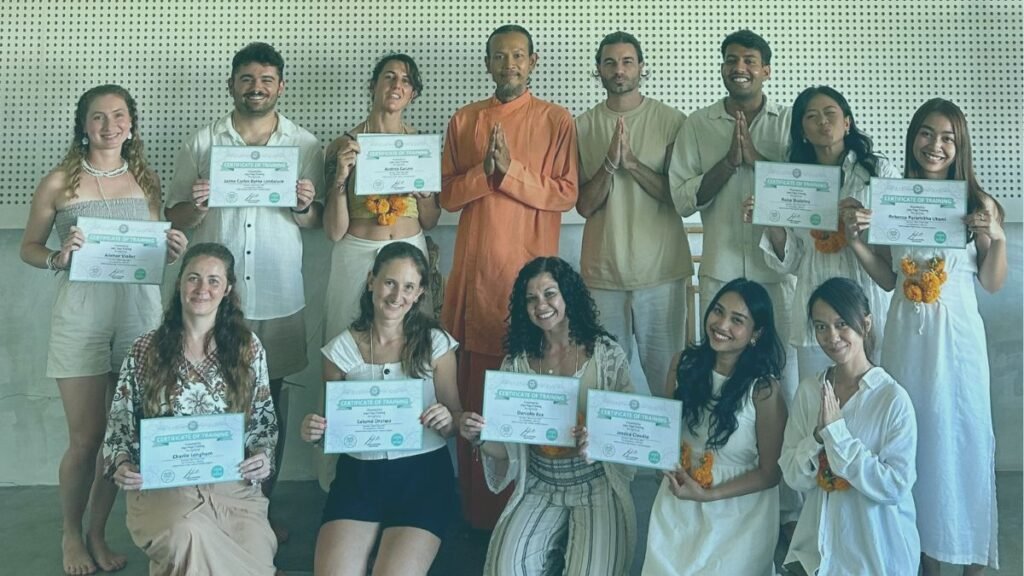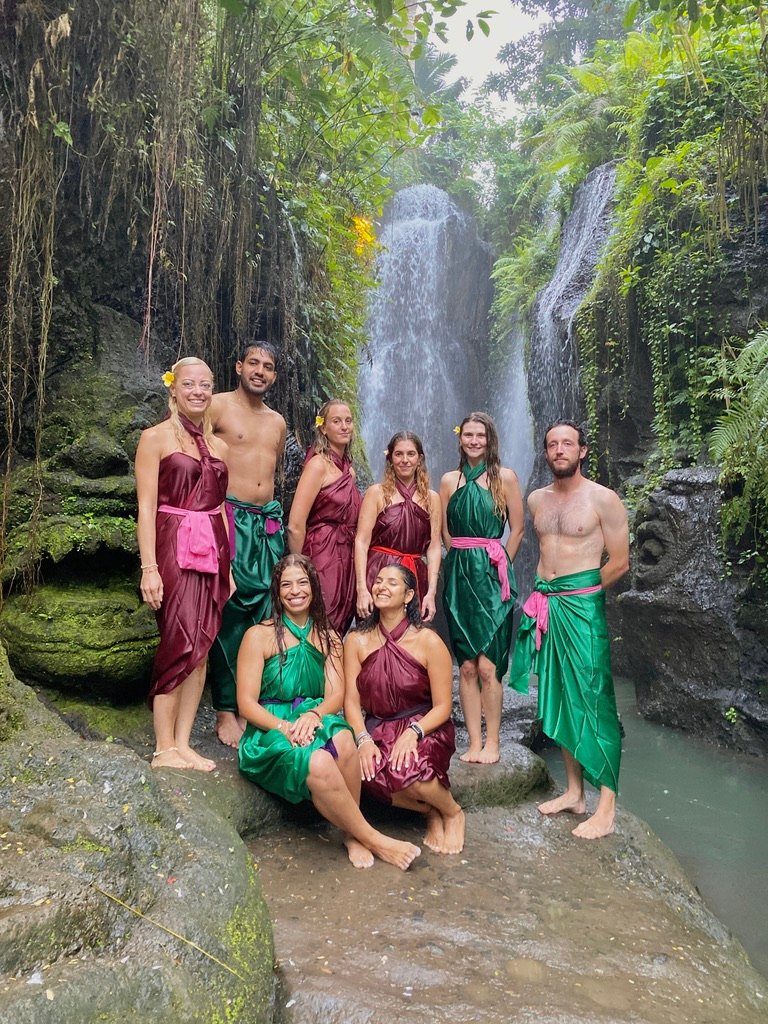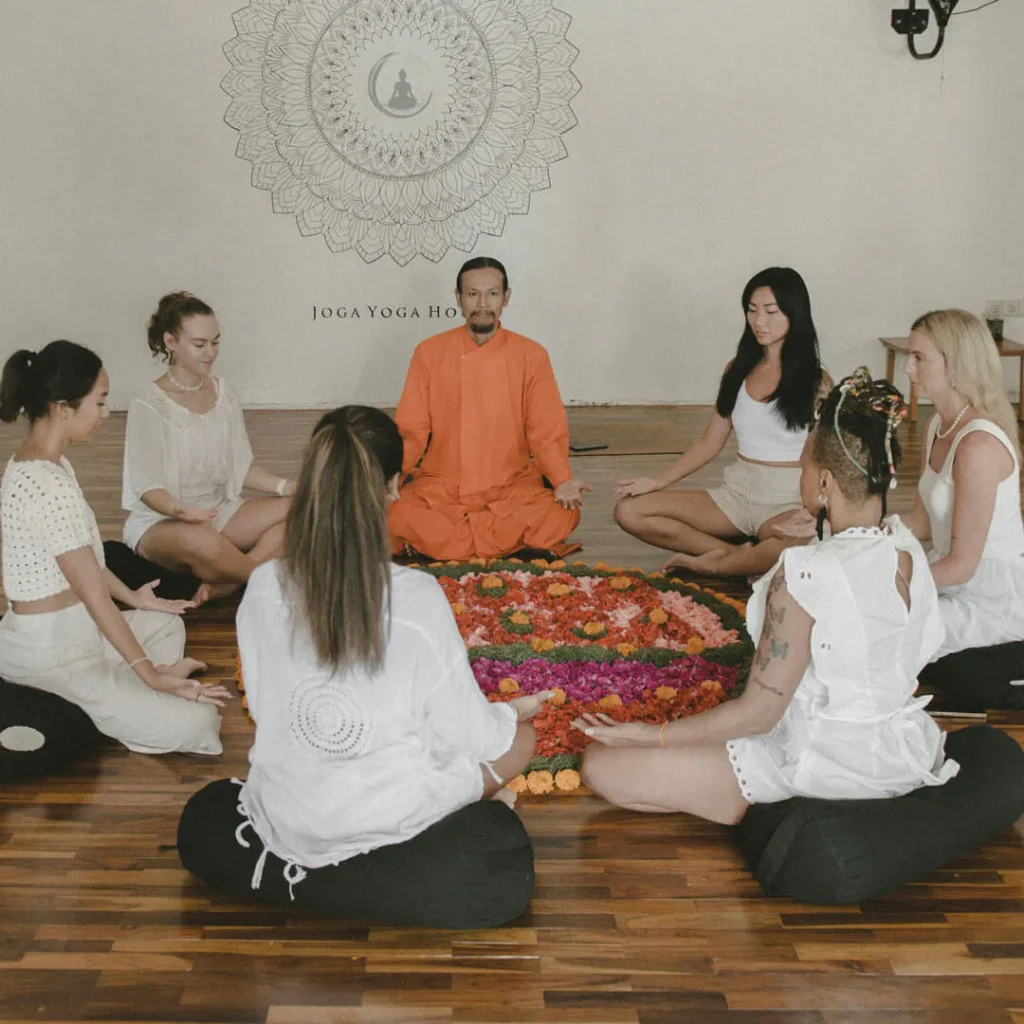Planning a yoga retreat in Bali? Let’s cut through the noise and make it happen. Whether you’re envisioning serene rice fields in Ubud or beachside flows in Canggu, Bali is the ultimate destination to level up your yoga practice and recharge your soul.
This guide gives you the play-by-play for crafting the perfect retreat—whether you’re a seasoned yogi looking to deepen your connection or a newbie curious about what a yoga retreat can offer. From choosing the best location to embracing Bali’s culture, we’ve got you covered. By the end, you’ll be ready to plan a retreat that’s not just a vacation but an experience that sticks with you long after you leave.
Choosing the Perfect Location in Bali

Finding the right spot for your yoga retreat can make or break the experience. Bali’s got everything—lush rice paddies, buzzing beach towns, and quiet luxury escapes. Here’s how to pick the location that matches your vibe.
Top Regions for Yoga Retreats
Ubud – The Spiritual Hub
If you’re chasing tranquility, Ubud is your spot. Known as Bali’s yoga capital, it’s surrounded by rice terraces and ancient temples. The vibe is calm, creative, and perfect for spiritual seekers. Plus, it’s packed with top-notch yoga studios and retreat centers.
Canggu – Laid-Back & Trendy
Canggu blends bohemian vibes with modern comforts. Think yoga at sunrise, surf sessions by day, and organic cafes by night. It’s got a relaxed energy with just enough buzz to keep things interesting.
Nusa Dua – Luxurious & Quiet
Looking for a high-end escape? Nusa Dua is all about pristine beaches and upscale resorts. It’s perfect for those who want peace, pampering, and a touch of exclusivity.
Seminyak – Stylish & Convenient
Seminyak is where yoga meets sophistication. Close to both Canggu and Ubud, it offers trendy cafes, boutique shopping, and vibrant nightlife. If you want a yoga retreat with easy access to everything, this is the place.
What to Look For in Your Retreat Location
- Natural Surroundings: Whether it’s jungle views or ocean breezes, pick a spot that inspires and restores you.
- Accessibility: Choose somewhere within a reasonable drive from the airport and near local amenities. No one wants to spend half the retreat stuck in traffic.
- Cultural Vibes: Go for a location where you can soak in authentic Balinese culture—think temple visits, traditional food, and local rituals.
Quick Recap of Bali’s Best Yoga Retreat Spots
- Ubud: Yoga studios, spiritual energy, and lush rice fields.
- Canggu: Beachy, boho, and buzzing with life.
- Nusa Dua: Exclusive, serene, and luxurious.
- Seminyak: Stylish, modern, and perfectly placed.
Setting Your Retreat Dates and Duration
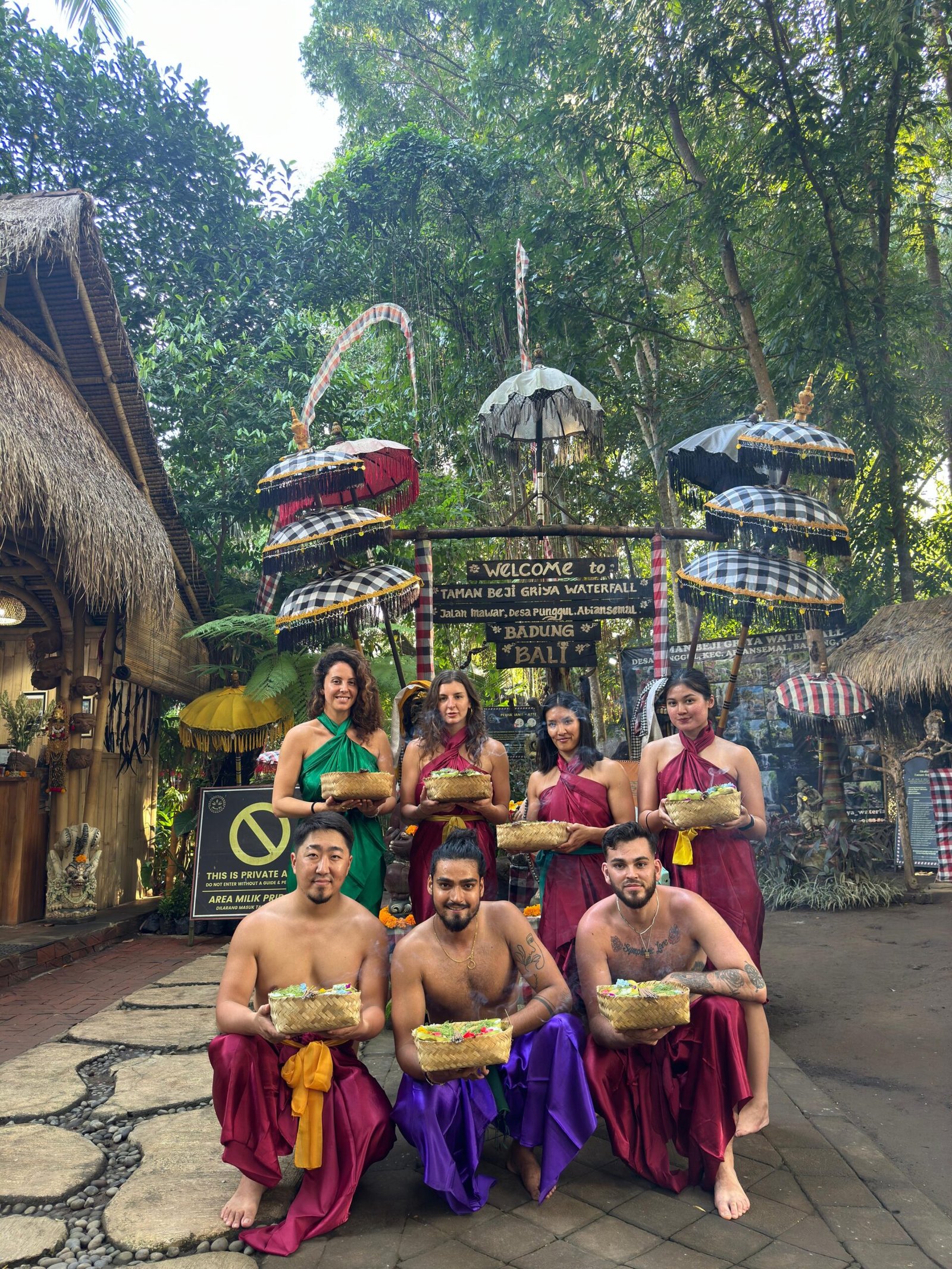
Nailing the right time and length for your yoga retreat in Bali can make all the difference. Bali’s tropical vibes are available year-round, but knowing when to go—and for how long—can help you maximize the experience while staying on budget.
Best Time of Year for a Yoga Retreat
Bali’s weather is split between dry and wet seasons, each offering unique perks. Here’s the breakdown:
- Dry Season (April–October):
This is Bali’s sweet spot for outdoor yoga and exploring the island’s beauty. Expect clear skies, warm temperatures, and the occasional crowd since it’s also peak tourist season. If you don’t mind paying a bit extra, this is the time to go. - Wet Season (November–March):
Rain might scare some people off, but the wet season has its charms. Showers are usually short, leaving the rest of the day humid but manageable. Fewer tourists mean quieter retreats and lower prices, but keep in mind outdoor activities could be hit-or-miss. - Shoulder Seasons (April/May & September/October):
These months are a hidden gem. You’ll get the best of both worlds—good weather without massive crowds. Perfect for balancing cost, comfort, and availability.
How Long Should Your Retreat Be?
The length of your yoga retreat shapes your experience. Here’s how to decide:
- Weekend Getaways (2–3 days):
Great for busy folks craving a quick reset. You’ll dip your toes into yoga practice and soak up some Balinese vibes without taking much time off. - Short Retreats (4–7 days):
Perfect for a balanced experience. You’ll have enough time to deepen your practice, explore Bali’s culture, and return home feeling recharged. - Longer Retreats (8+ days):
Ready for a life-changing vibe? Longer retreats let you dive into advanced yoga, explore yogic philosophy, and make a lasting transformation. This is the move if you want full immersion.
How to Pick the Right Duration
Your ideal retreat length depends on three factors:
- Personal Goals:
- Quick reset? Go for a weekend.
- Deeper yoga practice and cultural exploration? Aim for a week or more.
- Time Constraints:
- If you’ve only got a few days off, a shorter retreat works. If you’ve got more flexibility, longer stays will give you more bang for your buck.
- Budget:
- Longer retreats cost more (think accommodation, meals, and yoga instruction). Decide what’s realistic and find something that fits.
Crafting Your Retreat Program
Your retreat program is the backbone of the entire experience. It’s what takes a getaway in Bali from “nice” to “life-changing.” A killer program balances yoga, mindfulness, and wellness while sprinkling in some authentic Balinese culture to make it unforgettable.
Core Elements of a Strong Retreat Program
- Daily Yoga Practices
Mix it up to keep it fresh for your guests. Offer a variety of styles that cater to different energy levels and goals:- Hatha Yoga: Builds foundational strength and flexibility.
- Vinyasa Flow: Dynamic movement to boost energy and focus.
- Yin Yoga: Deep stretching and relaxation for recovery.
- Restorative Yoga: Passive poses for ultimate stress relief.
- Meditation Sessions
Meditation is essential for grounding and mindfulness. Guided sessions can help participants reduce stress and find clarity. Pro tip: Include sunrise or sunset meditations for a magical Bali vibe. - Wellness Add-Ons
Amp up the experience with these extras:- Sound Healing: Use gong baths or crystal bowls to create a calming, meditative atmosphere.
- Balinese Massage: Offer traditional massage therapy to release tension and enhance relaxation.
- Nature Walks: Organize guided hikes through Bali’s rice paddies or jungles for a grounding connection to nature.
Adding Authentic Balinese Touches
Bali’s culture is what sets it apart, so weave these experiences into your retreat:
- Traditional Dance Performances
Host a Legong or Barong dance performance for your guests. It’s an artistic and spiritual highlight they won’t forget. - Cooking Classes
Teach your crew how to whip up local dishes like nasi campur or satay. Bonus: They’ll leave with skills they can actually use. - Cultural Excursions
Take participants to explore iconic temples, local markets, or traditional villages. Places like Tirta Empul or the Tegalalang Rice Terrace offer a true taste of Bali’s heritage.
Selecting Accommodations and Amenities
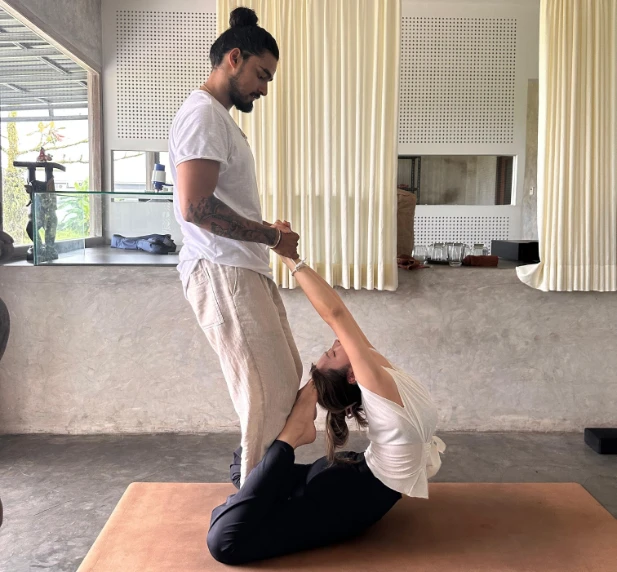
Your retreat accommodations set the tone for the entire experience. Whether it’s a serene villa tucked in the jungle or a budget-friendly guesthouse, the right choice creates the atmosphere your participants will remember. Here’s how to choose accommodations that align with your retreat’s goals and vibe.
Types of Accommodations in Bali
- Luxury Villas
Perfect for retreats focused on relaxation and indulgence. Think private pools, lush gardens, and dedicated staff. Villas work best for smaller groups where you want to create an exclusive, pampering experience. - Boutique Hotels
For a mix of style and comfort, boutique hotels offer a more intimate experience. These are ideal for retreats that prioritize a curated vibe with personalized service. - Guesthouses
Authentic, cozy, and budget-friendly, guesthouses are often family-run, giving your retreat a warm, community-focused feel. Great for smaller budgets and participants looking for simplicity and connection. - Eco-Resorts
Sustainability meets comfort here. With features like organic gardens and solar-powered facilities, eco-resorts are a great pick for retreats centered on mindfulness and environmental responsibility.
Key Amenities to Consider
Certain amenities can take a retreat from good to unforgettable. Here’s what to prioritize:
- Yoga Studio: A dedicated space is non-negotiable. Make sure it’s spacious, well-ventilated, and equipped with mats, props, and soothing decor.
- Swimming Pool: Beyond relaxation, pools can double as a venue for water-based yoga sessions or post-class cool-downs.
- Spa Facilities: Traditional Balinese massages and spa treatments are a huge draw for participants and enhance the wellness vibe.
- Healthy Dining Options: Offer meals that are both delicious and nourishing. Prioritize vegetarian and vegan options to cater to diverse dietary needs.
How to Choose the Right Spot
- Set a Budget
Know how much you’re willing to spend. Match your budget to the size of your group and the type of experience you’re offering. - Do Your Homework
Check platforms like Airbnb, Booking.com, and niche yoga retreat websites. Filter by amenities and read reviews carefully to get the real story. - Go Local
Contact accommodations directly. Many places in Bali are flexible and open to negotiating group rates or custom packages. - Prioritize Location
Pick somewhere that complements your retreat theme—close to nature, cultural landmarks, or the beach, depending on your focus.
Packing for Your Bali Yoga Retreat

Packing for a yoga retreat in Bali doesn’t need to feel like prepping for a Himalayan trek. The key? Comfort, practicality, and keeping it light. Here’s everything you’ll actually need.
Packing List for Your Bali Yoga Retreat
- Clothing:
- Yoga pants/leggings (2–3 pairs)
- Loose tops or tanks (4–5)
- Light jacket for cool evenings
- Swimsuit (for pool or beach chill time)
- Comfy walking shoes or sandals
- Flip-flops
- Yoga Gear:
- Yoga mat (if your retreat doesn’t provide one)
- Water bottle
- Optional: Strap or blocks if you like your own gear
- Toiletries:
- Sunscreen (SPF 30+ because Bali sun doesn’t mess around)
- Bug spray (mosquitos love tourists)
- Toothbrush, toothpaste, and deodorant
- Shampoo, conditioner, and body wash (travel-sized is enough)
- Any personal meds or a basic first-aid kit
- Personal Items:
- Passport and travel docs
- A bit of cash (Indonesian Rupiah)
- Phone, charger, and an adapter for Bali outlets
- Journal (if you’re into reflecting)
Packing Tips
- Pack Light: You’ll spend most of your time barefoot in yoga clothes. Don’t overthink it.
- Roll, Don’t Fold: Saves space and avoids wrinkles.
- Use a Backpack for Day Trips: Handy for carrying water, snacks, and sunscreen while you explore.
Optional Add-Ons
If you want to go the extra mile:
- Meditation Cushion: For added comfort during seated practice.
- Essential Oils: Lavender or sandalwood to amp up relaxation.
- Book on Bali Culture: Learn more about the island you’re on.
Embracing Balinese Culture
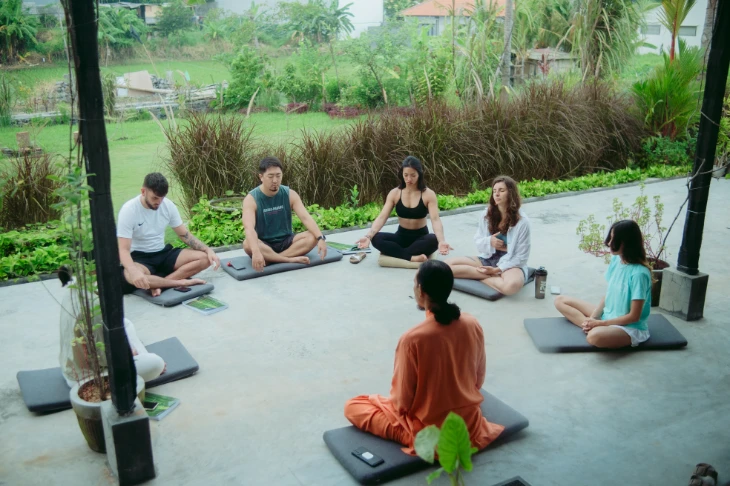
Bali isn’t just about stunning landscapes and yoga—it’s a cultural treasure trove. Respecting local traditions and connecting with the Balinese way of life will deepen your retreat experience and make it unforgettable.
Respecting Local Customs
Balinese culture is rooted in spirituality, and showing respect goes a long way:
- Dress Modestly: Cover your shoulders and knees when visiting temples or sacred sites. Bring a sarong—it’s a lifesaver.
- Respect Offerings: Those little flower baskets (“canang sari”) you see everywhere? They’re offerings to the gods. Don’t step on them or mess with them.
- Temple Etiquette: Remove your shoes, walk clockwise, and never point your feet at sacred objects.
Connecting with the Community
Dive deeper into Bali’s culture by engaging with locals:
- Attend a Ceremony or Event: Check out a kecak dance performance or visit a temple festival for a glimpse of Bali’s vibrant traditions.
- Learn Key Phrases: A simple “Selamat pagi” (good morning) or “Terima kasih” (thank you) shows respect and breaks the ice.
- Support Local Businesses: Skip the tourist traps. Shop at local markets, eat at warungs (family-owned restaurants), and buy from artisans.
Understanding Bali’s Spiritual Heart
What makes Bali tick is its unique blend of spirituality and daily life:
- Hinduism with a Balinese Twist: Religion here blends Hindu traditions with indigenous beliefs. Temples aren’t just monuments—they’re alive with rituals and ceremonies.
- Tri Hita Karana: This philosophy connects humans, nature, and the divine. It’s why you’ll feel a special balance here.
- Art as Ritual: Dance, music, and painting aren’t just for show—they’re expressions of spirituality. You’ll find this in everything from Legong dances to intricate carvings.
Final Thoughts
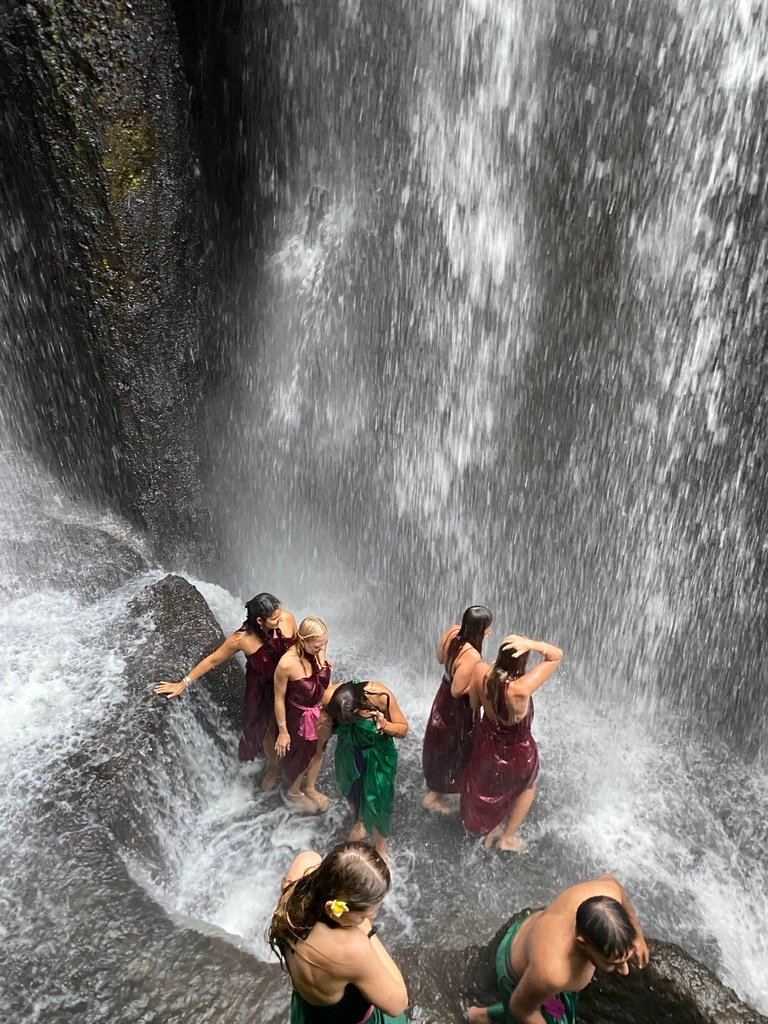
Planning a yoga retreat in Bali is more than just a getaway—it’s an opportunity to grow, recharge, and immerse yourself in a life-changing experience. And if you’re looking for the best place to make it happen, Joga Yoga is where it’s at.
With internationally recognized Yoga Alliance certifications, top-notch instructors, and a stunning location in Canggu, Joga Yoga delivers a retreat experience that’s equal parts transformative and professional. Whether you’re looking to deepen your yoga journey or start your teaching career, they’ve got you covered.
Question & Answer Hub
What is the best time of year to visit Bali for a yoga retreat?
The dry season (April–October) is ideal, offering sunny days perfect for outdoor yoga. Joga Yoga’s programs run year-round, so you can pick a time that works for you.
How much does a yoga retreat in Bali typically cost?
Retreat costs range from $1,699 for dorm accommodation to $2,999 for a deluxe private room, with everything included: meals, excursions, airport pickup, yoga materials, and certification. Early bird discounts are often available, so book ahead!
Why choose Joga Yoga?
- Stunning Location: Just minutes from the beach, with a vegan café and lush surroundings.
- Certified Programs: Yoga Alliance-recognized certifications mean you can teach anywhere in the world.
- Experienced Instructors: Learn from seasoned teachers who care about your growth.
- Unmatched Value: Every program includes meals, excursions, accommodation, and even a Balinese massage.


